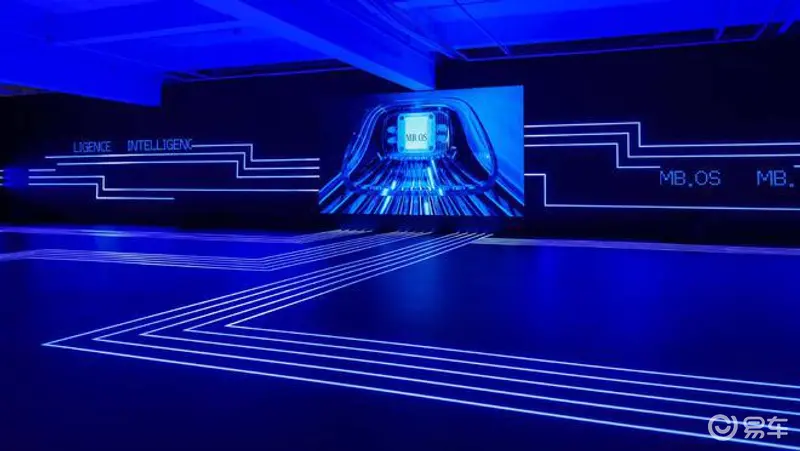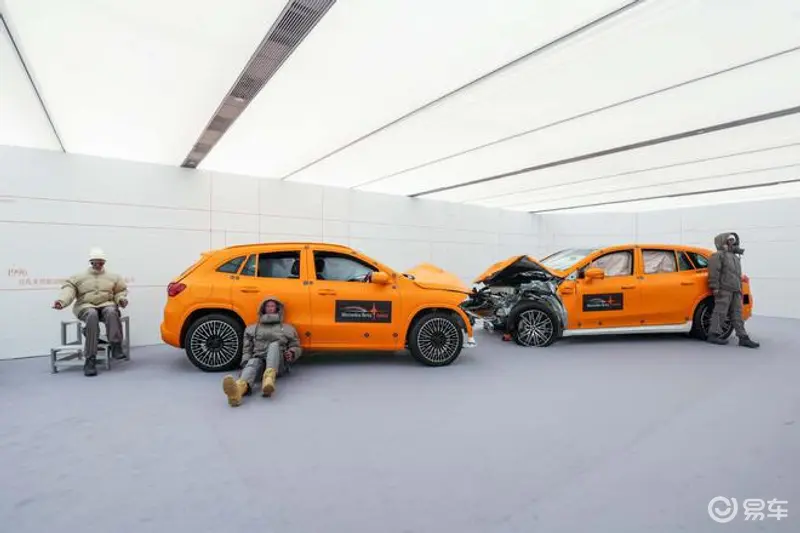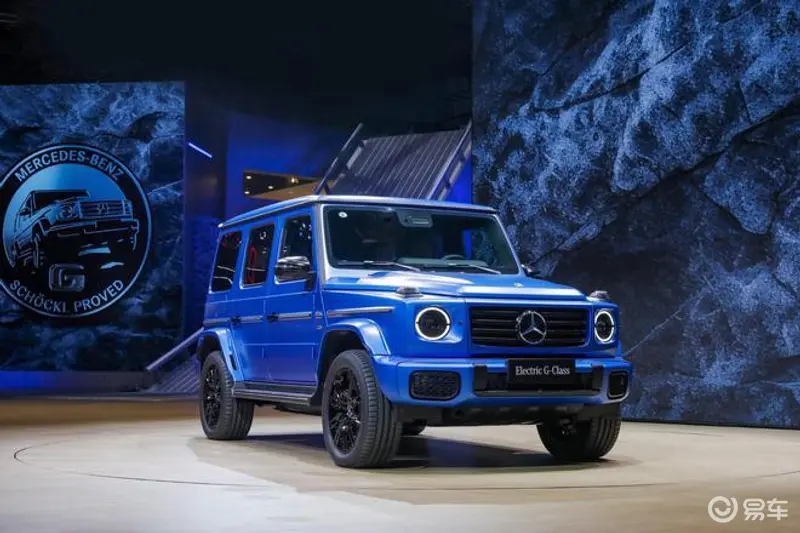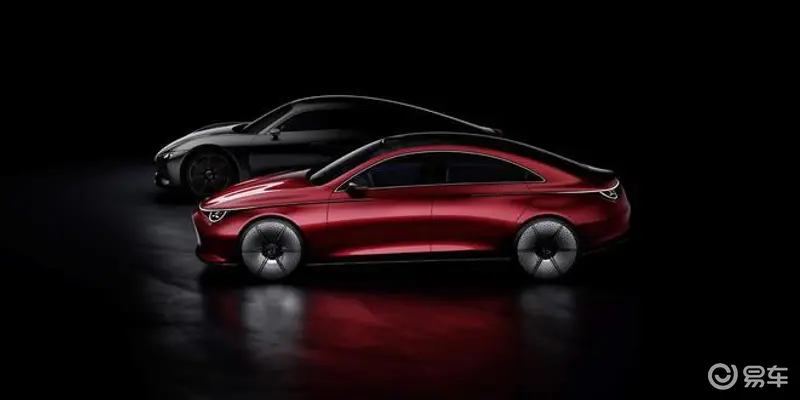梅赛德斯-奔驰创新日:展现未来智能驾驶舱架构

11月17日,电厂获悉,梅赛德斯-奔驰在广州车展期间的2024科技创新日上展示了纯电越野技术、全新一代智能域控制架构以及自主开展的电动车对撞测试为代表的安全科技等最新技术矩阵。
在电动化时代,梅赛德斯-奔驰进行了首次由汽车厂商自主举办的电动车公开对撞测试,在这一次测试中,EQS纯电SUV与EQA纯电SUV以112公里/小时的相对速度对撞,两辆车的整备质量相差比较大。碰撞后,两车关键的高压电池均完好无损,车身结构和溃缩区状态良好,车门可正常打开;车内,乘员舱完好,安全气囊正常弹开,EQS纯电SUV的MBUX超联屏也没有断裂变形;坐在两车内的假人受伤程度显示受到严重或致命伤害的风险低。
这主要得益于数字仿真模拟技术在碰撞测试中的应用,大大提升了测试的效率并降低全流程测试的成本。在数字软件中,奔驰采用有限元分析法,将整车模型拆分成大量有限单元,以细微的区域碰撞受力分析,进行更加有针对性的设计优化。以纯电EQS为例,在车辆仿真模拟碰撞测试中,其被拆分成1500万个单元,以精细分析碰撞受力情况。如今每款奔驰车型上市前都会经历15000次模拟碰撞。

奔驰还将X射线技术应用于碰撞测试,在高速X射线技术应用于碰撞测试后,位于车顶的X射线设备每秒可拍摄1000张图像,精确记录车辆内部变形,并可同时监测车辆和假人,捕捉曾经无法获取的安全信息。除此之外,奔驰电动车在上市之前,整车测试还要包括-40°C的极寒至70°C的高温测试、高原耐久测试等。
全新纯电G级越野车的高压电池采用高强度抗扭外壳,强度高、重量低、防水防腐防冲击,布局于梯形车架内不仅可免受侧面冲击,还让整车刚度提升超过50%。车底下方的高性能“盾甲护板”由高科技碳纤维复合材料制成,即便在其上仅有25平方厘米的面积上施加10.5吨的压力,整块护板也能不变形。因此,电动大G在恶劣地形中遇到尖锐物体的冲击,电池也不会损伤。为打造真正适用于越野的电池,奔驰的电池测试非常严苛,如将电池投入电解液80次、将电池加热到50°C后立即浸入近0°C的冷水、使用机械设备扭转电池包等,进行耐腐蚀性、漏电、密封性等测试,保证纯电G级越野车在越野工况下的安全性。
电动大G还搭载了四台可独立控制的轮边电机,配备四台两挡变速箱的电动车,每个电机都配有一个电动两挡变速箱,低速越野挡下,可实现1:22的齿比,扭矩更大,足以应对爬陡坡等越野工况。其搭载智能扭矩矢量分配系统,四轮动力可无级分配,甚至可实现四轮同速转动,带来虚拟差速锁效果。此外,这套系统也可实现一键上锁,上锁后也可完全操控转向。得益于智能扭矩矢量分配系统,全新纯电G级越野车可实现“G-TURN”原地调头、“G-STEERING”转向、“Off-Road Crawl”智能越野爬行。

纯电G级越野车搭载碳化硅逆变器在测试中的效率达到99%;四驱断开装置可使电机与前轴解耦,实现两驱行驶模式,WLTP工况下可在高速驾驶可节约10%能耗与约5%电量。用户可以在需要动力时深踩油门,在300毫秒内就可以恢复四驱模式。CLTC工况下,纯电G级越野车实现了571km续航,峰值扭矩为1164N·m的峰值扭矩,零百加速为4.9s。
近期,奔驰的“无图”L2++全场景高阶智能驾驶系统已上路测试;L3级有条件自动驾驶系统,支持的最高车速提速至95公里/小时;在自动驾驶算法安全领域,奔驰采用QNX操作系统,实现ASIL-D级别的高安全性,为未来L4级自动驾驶系统打下安全基础。
“无图”L2++全场景高阶智能驾驶系统应用端到端大模型、数据驱动地标检测,实现感知决策一体化。该系统基于纯视觉方案,不依赖高精地图,只要有导航,哪儿都能开。该系统基于AI大模型驱动,GPU集群的云端算力可以学习超百PB的训练数据,其中包括大量中国司机素材。目前,该系统已在公开道路上进行测试。
梅赛德斯-奔驰下一代基于端到端大模型的智能泊车系统,可实现全场景的自动泊入、泊出能力,车位识别成功率、泊车成功率将达到99%。奔驰虚拟助理的整体交互效率提升50%、唤醒仅需0.2秒、识别精准率达到97%,还提升自然语义理解能力、支持情感对话;应用大模型GPT后可应对6大场景,带口音普通话识别率提升20%,还熟知车辆功能。
全新MBUX沉浸式导航深度融合了智驾信息,在高速、城快路、普通路、停车场内部路等均可用,重要信息显示在最醒目的位置,还可以为人驾和智驾场景分配不同的重点信息显示。
奔驰正在加快智能化进程,MB.OS全新域控制架构将为奔驰下一代智舱智驾提供支持。MB.OS是一个面向服务的、奔驰从零开始自主开发的全新架构,覆盖4大功能域和1个通信模块,从车端到云端实现软硬件解耦,取保每辆奔驰车拥有相同的数字能力,并可通过OTA持续进化升级。MB.OS将成为未来每辆奔驰车型的“中枢神经系统”。该架构将于2025年随纯电CLA的上市推出。

在电动时代,奔驰提出要更注重车辆的能效,并基于这个理念打造了VISION EQXX概念车。目前,奔驰已在全球拥有三个多功能风洞,如2013年投入使用的斯图加特气动声学风洞试验室,可实现超过17级超强台风的265公里/小时最高风速,并通过大量风洞测试提升的空气动力学优化,提高纯电动车辆的能效。
On November 17th, the power plant learned that Mercedes Benz showcased its latest technology matrix, including pure electric off-road technology, a new generation of intelligent domain control architecture, and safety technology represented by independently conducted electric vehicle collision tests, at the 2024 Science and Technology Innovation Day during the Guangzhou Auto Show.
In the era of electrification, Mercedes Benz conducted the first public collision test of electric vehicles independently organized by car manufacturers. In this test, the EQS pure electric SUV collided with the EQA pure electric SUV at a relative speed of 112 kilometers per hour, with a significant difference in curb weight between the two vehicles. After the collision, the key high-voltage batteries of both vehicles were intact, the body structure and collapse area were in good condition, and the doors could be opened normally; Inside the car, the passenger compartment is intact, the airbags are deployed normally, and the MBUX super connected screen of the EQS pure electric SUV is not broken or deformed; The degree of injury to the dummy sitting in two cars indicates a low risk of serious or fatal injury.
This is mainly due to the application of digital simulation technology in collision testing, which greatly improves the efficiency of testing and reduces the cost of the entire testing process. In digital software, Mercedes Benz uses finite element analysis to break down the entire vehicle model into a large number of finite elements, and conducts more targeted design optimization through detailed analysis of regional collision forces. Taking pure electric EQS as an example, in vehicle simulation collision testing, it is divided into 15 million units to finely analyze the collision force situation. Nowadays, every Mercedes Benz model undergoes 15000 simulated collisions before being launched.
Mercedes Benz also applies X-ray technology to collision testing. After high-speed X-ray technology is applied to collision testing, the X-ray equipment located on the roof can capture 1000 images per second, accurately recording the internal deformation of the vehicle and simultaneously monitoring the vehicle and the dummy, capturing safety information that was previously inaccessible. In addition, before the launch of Mercedes Benz electric vehicles, the overall vehicle testing also includes high temperature testing from -40 ° C to 70 ° C, high-altitude durability testing, etc.
The high-voltage battery of the all-new pure electric G-Class off-road vehicle adopts a high-strength anti torsion shell, which has high strength, low weight, waterproof, anti-corrosion and impact resistance. The layout in the trapezoidal frame not only avoids side impact, but also increases the overall stiffness of the vehicle by more than 50%. The high-performance "shield armor plate" under the car is made of high-tech carbon fiber composite material. Even if a pressure of 10.5 tons is applied on an area of only 25 square centimeters, the entire plate can remain unchanged. Therefore, the electric G-Class will not be damaged by the impact of sharp objects in harsh terrain. To create batteries that are truly suitable for off-road use, Mercedes Benz's battery testing is extremely rigorous, such as immersing the battery in electrolyte 80 times, immediately immersing the battery in cold water at nearly 0 ° C after heating it to 50 ° C, and using mechanical equipment to twist the battery pack for corrosion resistance, leakage, sealing, and other tests to ensure the safety of pure electric G-Class off-road vehicles under off-road conditions.
The electric G-Class is also equipped with four independently controllable wheel side motors and four electric vehicles with two speed transmissions. Each motor is equipped with an electric two speed transmission. In low-speed off-road mode, it can achieve a gear ratio of 1:22 and has greater torque, which is sufficient to cope with off-road conditions such as climbing steep slopes. It is equipped with an intelligent torque vectoring distribution system, which allows for seamless distribution of four-wheel power and even enables all four wheels to rotate at the same speed, resulting in a virtual differential lock effect. In addition, this system can also achieve one click locking, and after locking, the steering can be fully controlled. Thanks to the intelligent torque vectoring distribution system, the new pure electric G-Class off-road vehicle can achieve "G-TURN" in place turning, "G-STEYING" steering, and "Off Road Crawl" intelligent off-road crawling.
The pure electric G-Class off-road vehicle equipped with a silicon carbide inverter achieved an efficiency of 99% during testing; The four-wheel drive disconnect device can decouple the motor from the front axle, achieving a two wheel drive driving mode. Under WLTP conditions, it can save 10% energy consumption and about 5% electricity consumption while driving at high speeds. Users can deeply press the accelerator when power is needed and restore four-wheel drive mode within 300 milliseconds. Under CLTC conditions, the pure electric G-Class off-road vehicle achieved a range of 571km, a peak torque of 1164N · m, and a 0-100km/h acceleration of 4.9s.
Recently, Mercedes Benz's "TuTu" L2++full scene advanced intelligent driving system has been tested on the road; L3 conditional auto drive system, the maximum speed supported is increased to 95 km/h; In the field of automatic driving algorithm safety, Mercedes Benz uses the QNX operating system to achieve high safety at ASIL-D level, laying a safety foundation for the future L4 level auto drive system.
The "TuTu" L2++full scene advanced intelligent driving system applies end-to-end large models and data-driven landmark detection to achieve integrated perception and decision-making. This system is based on a pure visual solution and does not rely on high-precision maps. As long as there is navigation, it can be used anywhere. The system is driven by AI big models, and the cloud computing power of GPU clusters can learn over 100 PB of training data, including a large amount of Chinese driver materials. At present, the system has been tested on public roads.
The next generation of Mercedes Benz intelligent parking system based on end-to-end large models can achieve automatic parking in and out capabilities in all scenarios, with a parking recognition success rate and parking success rate of 99%. The overall interaction efficiency of Mercedes Benz virtual assistant has been improved by 50%, wake-up time is only 0.2 seconds, recognition accuracy reaches 97%, and it also enhances natural semantic understanding ability and supports emotional dialogue; After applying the large model GPT, it can cope with 6 major scenarios, improve the recognition rate of Mandarin with accents by 20%, and is also familiar with vehicle functions.
The all-new MBUX immersive navigation deeply integrates intelligent driving information, which can be used on highways, urban expressways, ordinary roads, and internal roads in parking lots. Important information is displayed in the most prominent position, and different key information displays can be assigned to human driving and intelligent driving scenarios.
Mercedes Benz is accelerating its intelligentization process, and the new MB.oS domain control architecture will provide support for the next generation of Mercedes Benz's intelligent cockpit and driving. MB.oS is a new service-oriented architecture independently developed by Mercedes Benz from scratch, covering 4 major functional domains and 1 communication module. It achieves software and hardware decoupling from the vehicle end to the cloud, ensuring that each Mercedes Benz car has the same digital capabilities and can continuously evolve and upgrade through OTA. MB. OS will become the 'central nervous system' of every future Mercedes Benz model. This architecture will be launched with the launch of pure electric CLA in 2025.
In the era of electric vehicles, Mercedes Benz proposed to pay more attention to vehicle energy efficiency and based on this concept, created the VISION EQXX concept car. At present, Mercedes Benz has three multifunctional wind tunnels worldwide, such as the Stuttgart Aeroacoustic Wind Tunnel Laboratory, which was put into use in 2013. It can achieve a maximum wind speed of 265 kilometers per hour exceeding that of a Category 17 super typhoon, and has improved aerodynamic optimization through extensive wind tunnel testing, enhancing the energy efficiency of pure electric vehicles.

